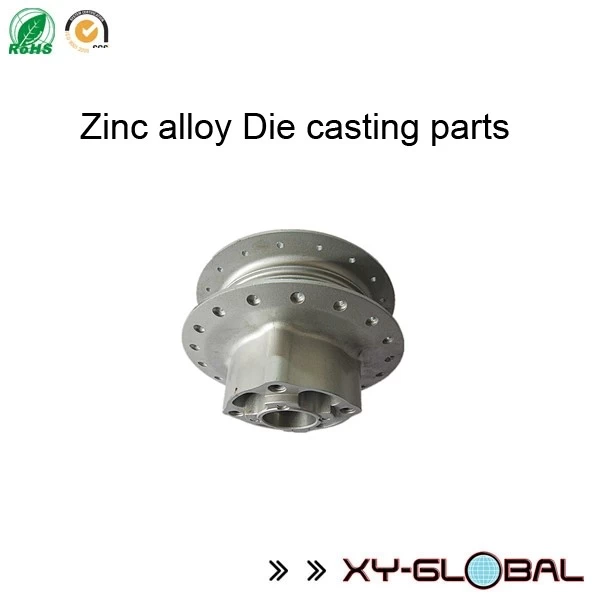Analysis of the most common defects in zinc alloy die castings
June
www.xy-global.com
2022-03-28 18:38:55
Zinc alloy die castings are currently widely used in various decorations, such as furniture accessories, architectural decoration, bathroom accessories, lighting parts, toys, tie clips, belt buckles, various metal buckles, etc., so the surface quality of the castings is relatively high. At the same time, good surface treatment performance is required. The most common defect of zinc alloy die castings is surface blistering.
Defect characterization: There are blisters on the surface of die-casting parts, which are found after die-casting, exposed after polishing or processing, and after oil spraying or electroplating. cause:
1. Caused by holes: mainly due to stomata and shrinkage mechanisms, stomata are often circular, while shrinkage is mostly irregular.
(1) Causes of pores: a. During the filling and solidification process of molten metal, holes are formed on the surface or inside of the casting due to the intrusion of gas. b The gas volatilized from the paint invades. c The gas content of the alloy liquid is too high, and it precipitates during solidification.
When the gas in the cavity, the gas volatilized from the paint, and the gas precipitated by the solidification of the alloy, when the mold exhaust is not good, the pores will eventually remain in the casting.
(2) Causes of shrinkage cavities: a) During the solidification process of molten metal, shrinkage cavities are generated due to the shrinkage of the volume or the lack of molten metal feeding at the final solidified part. b. The castings or castings with uneven thickness are overheated locally, resulting in slow solidification of a certain part, and a concave surface is formed on the surface when the volume shrinks. Due to the existence of pores and shrinkage cavities, when the die-casting parts are surface-treated, the holes may enter water. When baking after painting and electroplating, the gas in the holes will be heated and expanded; or the water in the holes will become steam and expand in volume. This results in blistering on the surface of the casting.
2. Intergranular corrosion caused by:
Harmful impurities in the composition of zinc alloys: lead, cadmium, and tin will gather at the grain boundaries to cause intergranular corrosion, and the metal matrix will be broken due to intergranular corrosion, and electroplating accelerates this scourge, and the parts affected by intergranular corrosion will expand and cause damage. The coating is lifted up, causing blistering on the surface of the casting. Especially in wet environments, intergranular corrosion can cause castings to deform, crack, and even shatter.
3. Cracks caused: water lines, cold separation lines, hot cracks.
Water lines and cold separation lines: During the filling process of the molten metal, the first molten metal contacting the mold wall solidifies prematurely, and the later molten metal cannot be fused with the solidified metal layer, forming a lamination on the surface of the casting. Stripe defects appear. The water marks are generally shallow on the surface of the casting; while the cold barrier may penetrate into the inside of the casting.
Hot crack: a When the thickness of the casting is uneven, the solidification process produces stress; b is ejected too early, and the metal strength is not enough; c, the force is uneven during ejection;
All of the above factors may cause cracks.
When there are water lines, cold separation lines and hot cracks in the die casting, the solution will penetrate into the cracks during electroplating, and will be converted into steam during baking, and the air pressure will lift the electroplating layer to form blisters.
Solution to defect:
The key to controlling the generation of pores is to reduce the amount of gas mixed into the casting. The ideal metal flow should be continuously accelerated from the nozzle to enter the cavity through the shunt cone and runner to form a smooth and consistent metal flow. Conical runners are used. The design, that is, the pouring flow should be gradually reduced from the nozzle to the ingate at an accelerating rate, can achieve this purpose. In the filling system, the mixed gas forms pores due to turbulent flow mixed with the liquid metal phase. From the study of the simulated die-casting process in which the molten metal enters the cavity from the casting system, it is obvious that the sharp transition in the runner and the incremental pouring The cross-sectional area of the runner will cause the molten metal to flow turbulently and entrain the gas, and the stable molten metal will help the gas enter the overflow groove and the exhaust groove from the runner and cavity, and be discharged out of the mold.
For shrinkage cavity: to make all parts dissipate heat evenly at the same time as much as possible during the solidification process of die casting, and solidify at the same time. Shrinkage cavities can be avoided through reasonable nozzle design, gate thickness and position, mold design, mold temperature control and cooling. For intergranular corrosion phenomenon: mainly control the content of harmful impurities in alloy raw materials, especially lead <0.003%. Pay attention to the impurity elements brought by the waste.
For water marks and cold insulation, the mold temperature can be increased, the gate speed can be increased, or the overflow groove can be enlarged in the cold insulation area to reduce the appearance of cold insulation.
For hot cracks: Do not change the thickness of the die casting sharply to reduce stress; adjust the relevant die casting process parameters; reduce the mold temperature.





















